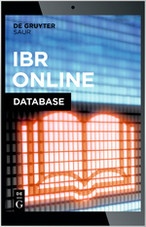- 27 June 2020
Article/Publication Details
Views: 2153
A SPECULATIVE MEDIUM: THE MATERIAL DIMENSION OF THE INTERPRETIVE EXPERIENCE IN GADAMER’S HERMENEUTIC PHILOSOPHY
| Title in the language of publication: | СПЕКУЛЯТИВНЫЙ МЕДИУМ: МАТЕРИАЛЬНОЕ ИЗМЕРЕНИЕ ИНТЕРПРЕТАТИВНОГО ОПЫТА В ГЕРМЕНЕВТИЧЕСКОЙ ФИЛОСОФИИ ГАДАМЕРА |
| Author: | ILYA INISHEV |
| Issue: |
HORIZON. Studies in Phenomenology. Vol. 9, №1 (2020), 44-68 |
| Language: | Russian |
| Document type: | Research Article |
| DOI : 10.21638/2226-5260-2020-9-1-44-68 | PDF (Downloads: 2418) |
Abstract
Key innovation of phenomenological, or philosophical hermeneutics is the treatment of ‘understanding’ not as an operation with symbols and meanings but as an activation of the specific experiential forms, including correlative affective and bodily potentials as well as respective ‘aggregate states’ of the material-perceptual environment. In this regard, understanding is a kind of transposition from one material and bodily configuration into another. In each case, configuration is comprised of ‘subjective’ (experience) and ‘objective’ (milieu) components. But while ‘subjective’ side of ‘hermeneutic phenomenon (‘hermeneutic event’) is elaborated by Gadamer relatively detailed (for example, “theory of hermeneutic experience” makes up the central—systemic—part of Truth and Method), dynamics of the ‘objective’ side (and first of all, of its material dimension) is just indicated by the use of the vivid metaphors (for example, “fusion of horizons” or “increase in being”) or by description of everyday material practices in which ‘microphysics’ of transformative dynamics of ambient environments is implicated but not discussed overtly, as, for example, in case of Gadamer’s references to architecture, décor, and gestures. The problem here is that the ‘strong’ treatment of the transformative potential of hermeneutic experience presupposes the strong transformation affecting not only interpreter’s consciousness but also materiality of his body and ambient environments. The elements of such a ‘strong’ treatment of transformative potential of understanding, we find in Gadamer’s conception of the speculative schematically presented in the two concluding sections of his Truth and Method.
Key words
Speculative medium, transubstantiation, materiality, mediality, perceptual faith.
References
- Barad, K. (2007). Meeting the Universe Halfway: Quantum Physics and the Entanglement of Matter and Meaning. Durham & London: Duke University Press.
- Bennett, J. (2010). Vibrant Matter. A Political Ecology of Things. Durham & London: Duke University Press.
- Boehm, G. (2007). Wie Bilder Sinn erzeugen. Berlin: Berlin University Press.
- Coccia, E. (2016). Sensible Life. A Micro-Ontology of the Image. New York: Fordham University Press.
- Davey, N. (2013). Unfinished Worlds. Hermeneutics, Aesthetics and Gadamer. Edinburgh: Edinburgh University Press.
- DeNora, T. (2014). Making Sense of Reality: Culture and Perception in Everyday Life. London: Sage Publications.
- Gadamer, H.-G. (1990). Hermeneutik I. Wahrheit und Methode. Grundzüge einer philosophischen Hermeneutik (Gesammelte Werke, Bd. 1). Tübingen: Mohr Siebeck.
- Gadamer, H.-G. (1993). Hermeneutik II. Wahrheit und Methode. Ergänzungen und Register (Gesammelte Werke, Bd. 2). Tübingen: Mohr Siebeck.
- Gadamer, H.-G. (1993a). Ästhetik und Poetik I. Kunst als Aussage (Gesammelte Werke, Bd. 8). Tübingen: Mohr Siebeck.
- Giunta, C., & Janus, A. (Eds.). (2016). Nancy and Visual Culture. Edinburgh: Edinburgh University Press.
- Hayles, K. (2014). Cognition Everywhere: The Rise of the Cognitive Nonconscious and the Costs of Consciousness. New Literary History, 45(2), 199–220.
- Ihde, D. (1999). Expanding Hermeneutics. Visualism in Science. Evanston Illinois: Northwestern University Press.
- Ingold, T. (2010). Ways of Mind-Walking: Reading, Writing, Painting. Visual Studies, 25(1), 15–23.
- Inishev, I. (2007). Reading and Discourse. The Transformations of Hermeneutics. Vilnius: European Humanities University Publ. (In Russian).
- Kearney, R., & Treanor, B. (Eds.). (2015). Carnal Hermeneutics. New York: Fordham University Press.
- Kress, G. (2010). Multimodality: A Social Semiotic Approach to Contemporary Communication. London & New York: Routledge.
- Lash, S. (2010). Intensive Culture: Social Theory, Religion and Contemporary Capitalism. Los Angeles / London/New Delhi /Singapore /Washington: Sage Publishing.
- Malafouris, L. (2014). Creative Thinging. The Feeling of and for Clay. Pragmatics & Cognition, 22(1), 140–158.
- Meillassoux, Q. (2008). After Finitude. An Essay on the Necessity of Contingency. New York: Continuum.
- Mersch, D. (2010). Posthermeneutik. Berlin: Akademie Verlag.
- Reckwitz, A. (2012). Die Erfindung der Kreativität. Zum Prozess gesellschaftlicher Ästhetisierung. Frankfurt am Main: Suhrkamp.
- Romano, C. (2009). Event and World. New York: Fordham University Press.
- Gallagher, S., Martínez, S. F., & Gastelum, M. (2017). Action-Space and Time: Towards an Enactive Hermeneutics. In B. Janz (Ed.), Place, Space and Hermeneutics (83–96). Dordrecht: Springer.
- Shusterman, R. (2012). Thinking Through the Body: Essays in Somaesthetics. Cambridge, New York: Cambridge University Press.
- Toadvine T., & Lawlor, L. (Eds.). (2007). The Merleau-Ponty Reader. Evanston Illinois: Northwestern University Press.

This work is licensed under a Creative Commons Attribution-NonCommercial 4.0 International License.

|
|
|
|
|

|
|
|
|
|

|
|
|
|
|
|
|
|
|
|
|
|
|
|
|
|
|
|
|
|
|
|

|
|
|
|
|
|
|
|
|
|
|
|
|
|
|
|
|
|
|
|
|
|
|
|
|
|
|
|

|

|
Social networks:





